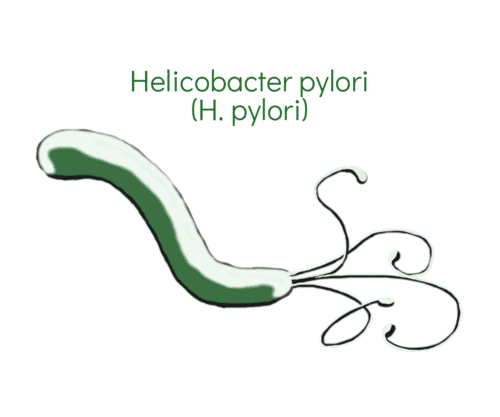Molluscum contagiosum on the vulva
The virus molluscum contagiosum causes little pearly bumps to appear on the vulva, but only a few weeks after contact with an infected person. Molluscum contagiosum will resolve eventually by itself, but it can take a long time.
Study: the relationship between endometritis (inflammation of the endometrium) and BV
Women with BV more often have an inflamed endometrial lining than those without BV.
Is your recurrent BV caused by H. pylori?
We look at a case study and discuss how and why H. pylori could be responsible for your BV.
Vaginal and urethral Helicobacter pylori (H. pylori)
We look at research into the sexual transmission of Helicobacter pylori and how it could be a cause of bacterial vaginosis and urethritis in women. There are many modes of transmission, including breast to baby, and mouth to vagina.
Study: ascorbic acid (vitamin C) for BV – does it work?
We look into the research of vitamin C as a vaginal treatment for BV.
Study: vitamin C for abnormal vaginal microflora
A study looks into vitamin C for a treatment for changing the pH of the vagina and restoring healthy microflora in women (including pregnant women).
Study: Using boric acid and G. vaginalis
We examine some scientific research into boric acid, and how it could tip your treatment over the edge.
Study: Subtypes of G. vaginalis
A study into the different subtypes of G. vaginalis present in BV, and which are most closely associated with BV.
Study: post-BV-treatment sex life and contraceptives use matters
Worse outcomes were found in women who had the same sex partner before and after BV treatment, but better outcomes in those on oestrogen-based birth control.
Study into the metabolic ‘signature’ of vaginas with BV
A study looks into the difference between BV vaginas and healthy vaginas in terms of metabolites.
I’m really nervous that the BV treatment won’t work and I will be stuck with it for life
Understanding the treatment program and how to deal with your nerves about being stuck with BV for the rest of your life.
Vaginal boric acid fact sheet
Boric acid is a management strategy for yeast or bacterial infections.
I’m a swim teacher – will the BV treatment still work if I’m in water all day?
We discuss the impact of water submersion on the treatment.
H. pylori and bacterial vaginosis
We discuss why H. pylori infections - and their medical treatments - can result in BV.
Condyloma lata (syphilis-related genital warts)
Condyloma lata refers to the warts that appear in the secondary form of syphilis.
Fresh milk kefir grains vs dried milk kefir grains
Dried milk kefir grains aren't very useful for our purposes - fresh is the way to go.
Does female ejaculate fluid contribute to BV?
She wants to know if her own ejaculate fluid is just as disruptive in alkalinity as a man's in the vagina during BV treatments.
CLINICAL TRIAL CLOSED: BV treatment
BV trial now taking participants in San Francisco.
Treating BV during pregnancy (Killing BV)
If you're pregnant, we've got recommendations for Killing BV treatments that are baby-friendly.
What is genital shedding in herpes?
Viral shedding is where a virus makes virus babies that are popped out of cells, setting out to find their own cells to replicate in, and pop out their own viral babies.





